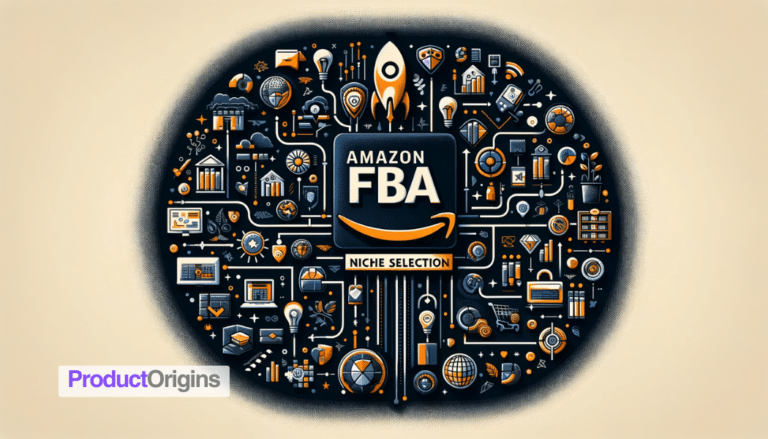E-commerce continues to explode in popularity, with Amazon leading the way. In fact, over 50% of product searches now begin directly on Amazon, highlighting the platform’s dominance in online retail. This massive shift presents a tremendous opportunity for entrepreneurs to build successful businesses by selling products via Amazon’s Fulfillment by Amazon (FBA) program.
However, one of the biggest challenges new Amazon sellers face is identifying which products to sell. With over 12 million items on Amazon, choosing profitable, in-demand products can be overwhelming. Conducting thorough product research is crucial for long-term success.
This comprehensive guide provides aspiring Amazon sellers with innovative methods and cutting-edge strategies for product research. You can systematically uncover lucrative product opportunities perfect for your Amazon FBA business by leveraging the latest tools and data-driven insights.
Understanding Your Target Audience
The first step in intelligent product selection is understanding exactly who your target buyer is. What customer profile is most likely to purchase products in your chosen niche? By researching your ideal audience’s demographics, interests, needs, and buying habits, you gain invaluable insight into which products they will respond to most positively.
Use Amazon’s Category Best Sellers to analyze current top-ranked products in your niche, examining the existing customer reviews and star ratings. This reveals valuable details about why buyers purchased these items, what they liked or disliked, and what additional features they requested.
Third-party analytics tools like Helium 10’s Product Discovery also assess product opportunities based on actual buyer intent data, scientifically matching products to demonstrated consumer demand.
Defining Your Niche Market
One of the most effective product research strategies is to focus on specialized niche markets. Targeting a narrow product category with highly-targeted buyers allows you to dominate that space rather than competing broadly against mega brands.
Conduct keyword research using software like SellerApp or Jungle Scout to reveal lucrative sub-niches with high buyer intent but relatively low competition. Evaluating search volume data identifies profitable gaps for new products catering to underserved consumer demand.
For example, a toy seller may uncover demand for educational wooden block sets promoting STEM skills. Launching a novel product that addresses this need can establish category dominance in a specialized niche before competitors catch on.
Identifying Profitable Product Opportunities
The most daunting yet exciting step in product research is generating potential product ideas suited for your Amazon FBA business. While the possibilities may seem endless, advanced analytics tools greatly simplify finding options with outstanding profit potential.
Cutting-edge platforms like Jungle Scout’s Product Discovery utilize artificial intelligence to match you with statistically proven product opportunities matching your business criteria.
By providing key details like your desired average sales price and production budget, the technology scans Amazon globally to identify aligned products exhibiting strong historical performance, projecting future sales and ROI. This eliminates speculation and guesswork.
Viral Launch also offers Product Intelligence leveraging machine learning algorithms to prescribe product ideas. However, they emphasize split testing merchandise to validate buyer demand before fully launching. This innovative approach minimizes risk by confirming positive customer response before high-volume production.
Evaluating Product Research Data
In today’s data-driven e-commerce landscape, product research decisions must be supported by hard statistics – not gut feelings. Valuable metrics to analyze include:
Profitability: What is the realistic net profit margin based on landed costs, Amazon fees, and estimated PPC spend?
Demand: Examine the Amazon Best Seller Rank curve to assess consistent sales velocity and positive trajectory.
Competition: Estimate competitor count and cross-reference against category demand to quantify market share opportunity.
Reviews: Prioritize products with mostly 4 and 5-star reviews showcasing happy customers.
Benchmarking these quantified factors across prospective selections ensures that your shortlist targets large buyer markets craving high-quality solutions.
Implementing next-generation analytics resources simplifies this entire process. Platforms like SellerPlex automatically compute key performance indicators when you input a product, generating an independent feasibility assessment for evidence-based decision-making. This eliminates speculative choices prone to failure.
Using Product Research Tools
Sophisticated eCommerce sellers leverage innovative tools to accelerate finding winners. Here are 4 top solutions:
Jungle Scout: Leading all-in-one suite for opportunity identification, demand forecasting, keyword research, competitor tracking, and more powered by best-in-class data science.
Helium 10: Robust platform spanning opportunity finding, market intelligence, listing builder, promotions tracking, and comprehensive analytics.
Viral Launch: Specialized Amazon Product Intelligence driven by predictive algorithms matching merchandising opportunities to consumer behavior for optimized new product launches.
SellerApp: Powerful App and Chrome extension executing product research, tracking sales metrics, and aiding listing optimization. Highly rated entry-level tool.
Conducting Keyword Research
Meticulous keyword selection optimizes product discoverability and conversions. Tools like Helium 10’s Magnet assess search volume data for millions of associated keywords, revealing questions buyers ask to uncover preferred terminology.
For example, a hot-selling grill brush may target main keywords like “grill brush” but also secondary phrases like “best grill cleaning brush” or “safe BBQ brush.” This captures more specific buyer intents.
Prioritize keywords with at least 1000 monthly searches and under 10,000 competing products. Confirm your selections sufficiently describe product benefits and differentiate from rivals to compel the click.
Selecting Reliable Suppliers
The success of your Amazon FBA business heavily relies on partnerships with trustworthy suppliers delivering consistent quality merchandise on schedule.
Vet supplier candidates on capability criteria like production capacity, quality control procedures, and shipping reliability. Narrow options to companies satisfying your expectations, then contact remaining suppliers to assess responsiveness and negotiate agreeable pricing.
Platforms like Salehoo contain verified supplier directories to expedite finding reputable trading partners. Maintain strong supplier relationships through prompt payments, transparent communication, and mutually beneficial terms.
Avoiding Common Mistakes
Many new sellers undermine promising business ventures by making reckless product choices. Only select items that thoroughly analyze supporting data or mindlessly copy competitors. This naive approach leads to inevitable failure.
Likewise, only become emotionally attached to specific products with evidence confirming buyer demand. Objective, data-driven analysis is mandatory for success.
Other mistakes, like ignoring negative reviews or selecting commoditized products with wafer-thin margins, must also be avoided through careful research. Identify these pitfalls proactively to steer clear of disaster.
Case Studies
Inspiring success stories from experienced sellers demonstrate lucrative product research in action:
After analyzing buyer intent data around optimizing limited space, Alex achieved over $100k in monthly sales, identifying a novel kitchen storage solution for small homes. They are differentiated through innovative design and premium materials.
Amelia licensed niche cartoon designs onto fashionable everyday apparel and accessories like t-shirts, hoodies, and phone cases. By focusing entirely on this specialized vertical, they built a 7-figure brand beloved by loyal followers.
Both examples demonstrate that effectively addressing underserved buyer needs in a specific market through creative approaches leads to remarkable success on Amazon FBA.
Conclusion
Finding winning products is the linchpin to profitability on Amazon FBA. Conducting rigorous research around target consumers, high-potential niche markets, and quantifiable product feasibility greatly simplifies product selection to set your new business up for prosperity.
Leverage the latest analytics software solutions to accelerate uncovering options perfectly aligned to your capabilities and buyer demand. Maintain relentless data-driven analysis of product research decisions – and prepare to scale returned revenue after launch rapidly!
To receive additional tips on building a thriving Amazon FBA business, subscribe to our email newsletter for regular guidance from experts. I wish you explosive growth on your new entrepreneurial journey!







